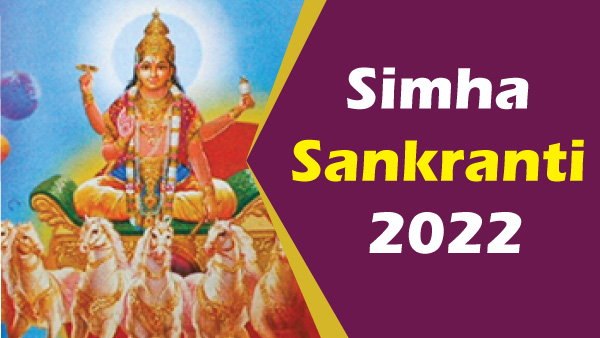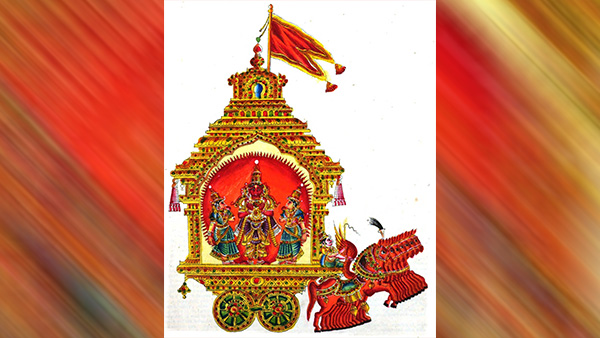Just In
- 2 hrs ago

- 6 hrs ago

- 9 hrs ago

- 10 hrs ago

Don't Miss
- Education
 UP Board Result 2024: 82% of Jail Inmates Passed the Class 12 and 97% of the Class 10
UP Board Result 2024: 82% of Jail Inmates Passed the Class 12 and 97% of the Class 10 - News
 Bengaluru Water Crisis: PM Modi Slams Karnataka Congress, Says Mismanagement Turned Tech City To Tanker City
Bengaluru Water Crisis: PM Modi Slams Karnataka Congress, Says Mismanagement Turned Tech City To Tanker City - Movies
 Queen Of Tears Episode 14 OTT Release Date, Time, Platform: When & Where To Watch? What To Expect? DEETS Out
Queen Of Tears Episode 14 OTT Release Date, Time, Platform: When & Where To Watch? What To Expect? DEETS Out - Automobiles
 Tata Altroz Records a 55% Sales Growth in March 2024
Tata Altroz Records a 55% Sales Growth in March 2024 - Sports
 IPL 2024: DC vs SRH Live Score & Updates; Travis Head smashes 16-ball fifty; SRH off to a blistering start
IPL 2024: DC vs SRH Live Score & Updates; Travis Head smashes 16-ball fifty; SRH off to a blistering start - Finance
 Rs 17.50/Share Dividend: Tata Mid Cap To Consider Dividend On April 29, LIC Stake 9.88%
Rs 17.50/Share Dividend: Tata Mid Cap To Consider Dividend On April 29, LIC Stake 9.88% - Technology
 Best Noise-Cancelling Earbuds Under Rs 5,000: CMF Buds Pro, Redmi Buds 5, Realme Buds Air 5, and More
Best Noise-Cancelling Earbuds Under Rs 5,000: CMF Buds Pro, Redmi Buds 5, Realme Buds Air 5, and More - Travel
 Journey From Delhi To Ooty: Top Transport Options And Attractions
Journey From Delhi To Ooty: Top Transport Options And Attractions
Simha Sankranti 2022: Date, History, Worship Method, Puja Rituals, Olgia Festival
Simha Sankranti is unanimously celebrated in certain states of South and North India with great fervour. Surprisingly, this is the most favoured festival for the Kumaunis of Himachal Pradesh who, as a custom, apply ghee on their foreheads and consume ghee-dripping urad stuffed parathas on this day. Exchanging gifts with the local landlords is deemed to be another interesting feature of this festival.

Down south, the customs are entirely different. Holy baths, tarpans, charitable activities, the Appada pujas, and Abhishek performed with tender coconut are the striking characteristics of the southern celebrations. This festival is marked with rituals that are conducted as per the cultural moorings of the respective region. Read the entire article to gather more information about this festival.
Simha Sankranti 2022: Date
Sunrise on 17 August 2022 is at 06:07 am. Sunsets on 17 August 2022 at 06:54 pm. Punya Kaal Muhurta on 17 August, lasts from 06:07 am up to 17 August at 07:28 am. Maha Punya Kaal Muhurta starts on 17 August from 07:04 am to 17 August at 07:28 am. Sankranti muhurat ushers in on 17 August, 2022 at 07:28 am.
SImha Sankranti 2022: History
Solar transition or transit of the Sun from kataka rashi (Cancer) to simha rashi (Leo) is known as Simha Sankranti or Simha sankramana. In Malayalam, this month is called Chinga, in Tamil, it is Avani and Bhadra, as per the Bengali calendar. There are 12 sankrantis in a year and the beginning of each month would be a Sankranti day for that month.
People from the slopes of Kumaon in Himachal Pradesh to the South Indian states of Karnataka, Kerala, Tamil Nadu and Andhra Pradesh, find it exceedingly important to observe the Simha Sankranti. Sankramana punya snan or holy bath taken on this day delivers unbelievably good benefits.
Simha Sankranti 2022: Worship Method
Each day is made of 60 ghatis. About 16 ghatis before and 16 ghatis after the Sankranti muhurta is considered to be very good for conducting all Sankranti related auspicious activities. Simha Sankranti, like any other Sankranti, is deemed auspicious to conduct ancestral rites and charitable activities.
At Lord Vishnu temple at Kulai, near Mangalore, special rituals like Narikela Abhishekha and Appada puja are conducted to celebrate the event. A priest performs these rituals as per the muhurat. Devotees who offer bhog along with other holy ingredients in worship to Sun God, Lord Vishnu and Lord Narsimha Swami, are surely to be blessed with a lucky and prosperous life. Many other temples in the Southern states observe rituals and prayers on this day.
Simha Sankranti 2022: Puja Rituals
- In Simha Sankranti, the Lord Vishnu, the Sun god and Lord Narasimha Swamy are worshipped as main deities.
- A sacred bath with Nariyal or (coconut) abhisheka is performed for which only fresh coconut water is used.
- Lord Ganesha is invoked before the other pujas are started. Appada puja is done to appease him on this day.
- The Hoovina Puja performed for Lord Vishnu continues for a month up to Kanya Sankranti.
- Elaborate pujas are performed with flowers fruits and other sweet delicacies offered as bhog for the deity and the mantras are chanted for additional blessings from God.

Simha Sankranti 2022: Olgia or Kumaun Ghrit (ghee) Festival
The Kumaun belt of Himachal Pradesh celebrates the Simha Sankranti with great enthusiasm and faith. They call it Olgia, in the Kumauni parlance. There seems to be a historical background behind this celebration. During the regime of the Chand dynasty, craftsmen used to line up their products to receive the King's appreciation and rewards. Other commoners too carried flowers, fruits and vegetable produce, and milk products to the court of the Raja. This eventually turned into a customary observance where the royal family began receiving the offerings from the common populace in a ritual called Olag. This is reminiscent of the time when people used to give gifts to the British in order to appease them on the Christmas day. However, these days, it is customary for the farmers, and artisans to give and take money and gifts to and from the landlords and customers. The usual items that are exchanged in this way are Binai (oral harp), datkhocha (metallic tooth pick), metal calipers, axes, ghee, vegetables and firewood.
In conformity with the tradition of Kamaunis, Sankraman or Sankranti bath is taken with holy water that is sanctified with some rites. Chapatis made from horse bean dipped in plenty of butter and ghee is consumed throughout the day here. This is an occasion for the Kumaunis to apply ghee on their foreheads and consume plenty of it with urad dal stuffed chapatis. It is believed that the beneficial influence of this Sankranti, is that it sweetens the walnuts in the fields. This festival is justifiably called Ghrit or ghee festival in the Bageshwar region of Kumaun in Uttarakhand. 'Ghrit' in Sanskrit means 'Ghee' or 'clarified butter'.
Disclaimer: The information is based on assumptions and information available on the internet and the accuracy or reliability is not guaranteed. Boldsky does not confirm any inputs or information related to the article and our only purpose is to deliver information. Kindly consult the concerned expert before practising or implementing any information and assumption.
Image sources: Wikimedia Commons
-
 yoga spiritualityThrissur Pooram 2024: Date, Time, History, Significance, And Celebrations Related To Kerala's Rich Traditions
yoga spiritualityThrissur Pooram 2024: Date, Time, History, Significance, And Celebrations Related To Kerala's Rich Traditions -
 yoga spiritualityKamada Ekadashi 2024 Wishes: Greetings, Messages, Texts, Images, Twitter Status And Instagram Captions
yoga spiritualityKamada Ekadashi 2024 Wishes: Greetings, Messages, Texts, Images, Twitter Status And Instagram Captions -
 yoga spiritualityChaitra Navratri 2024 Day 9: Maa Siddhidatri Puja Vidhi, Vrat Katha, Mantra, And Aarti Lyrics
yoga spiritualityChaitra Navratri 2024 Day 9: Maa Siddhidatri Puja Vidhi, Vrat Katha, Mantra, And Aarti Lyrics -
 yoga spiritualityKamada Ekadashi 2024 Mantras To Chant On This Auspicious Day To Fulfill Desires
yoga spiritualityKamada Ekadashi 2024 Mantras To Chant On This Auspicious Day To Fulfill Desires -
 yoga spiritualityChaitra Navratri 2024 Day 8: Maa Mahagauri Puja Vidhi, Vrat Katha, Mantra, And Aarti Lyrics
yoga spiritualityChaitra Navratri 2024 Day 8: Maa Mahagauri Puja Vidhi, Vrat Katha, Mantra, And Aarti Lyrics -
 yoga spiritualityChaitra Durga Ashtami 2024 Wishes, Greetings, Messages, Images, Posters, Twitter, And Instagram Status
yoga spiritualityChaitra Durga Ashtami 2024 Wishes, Greetings, Messages, Images, Posters, Twitter, And Instagram Status -
 astrologyRam Navami 2024: Lucky Zodiac Signs Who Will Get Special Blessings Of Lord Rama And Will Be More Fortunate
astrologyRam Navami 2024: Lucky Zodiac Signs Who Will Get Special Blessings Of Lord Rama And Will Be More Fortunate -
 yoga spiritualityWhen Is Kamada Ekadashi 2024? Confirmed Date, Puja Rituals, Why Fasting Is Significant On This Day
yoga spiritualityWhen Is Kamada Ekadashi 2024? Confirmed Date, Puja Rituals, Why Fasting Is Significant On This Day -
 yoga spiritualityChaitra Navratri 2024 Day 7: Maa Kalratri Puja Vidhi, Vrat Katha, Mantra and Aarti Lyrics
yoga spiritualityChaitra Navratri 2024 Day 7: Maa Kalratri Puja Vidhi, Vrat Katha, Mantra and Aarti Lyrics -
 yoga spiritualityChaitra Navratri 2024 Day 6: Maa Katyayani Puja Vidhi, Vrat Katha, Mantra and Aarti Lyrics
yoga spiritualityChaitra Navratri 2024 Day 6: Maa Katyayani Puja Vidhi, Vrat Katha, Mantra and Aarti Lyrics -
 yoga spiritualityChaiti Chhath Puja 2024 Wishes, Greetings, Texts, Messages, Images, WhatsApp, Twitter And Instagram Status
yoga spiritualityChaiti Chhath Puja 2024 Wishes, Greetings, Texts, Messages, Images, WhatsApp, Twitter And Instagram Status -
 yoga spiritualityChaitra Navratri 2024 Day 5: Maa Skandmata Puja Vidhi, Katha, Mantra And Aarti
yoga spiritualityChaitra Navratri 2024 Day 5: Maa Skandmata Puja Vidhi, Katha, Mantra And Aarti


 Click it and Unblock the Notifications
Click it and Unblock the Notifications



